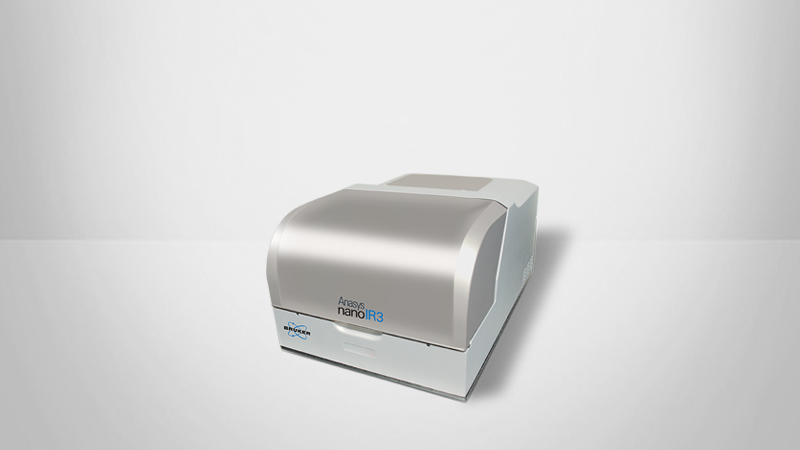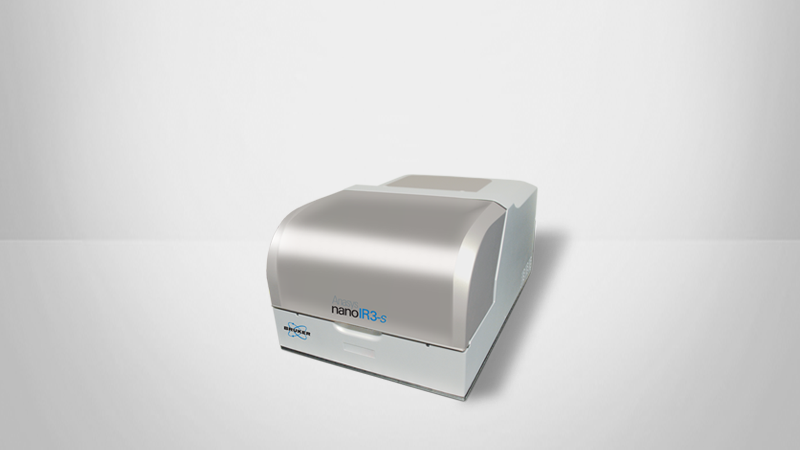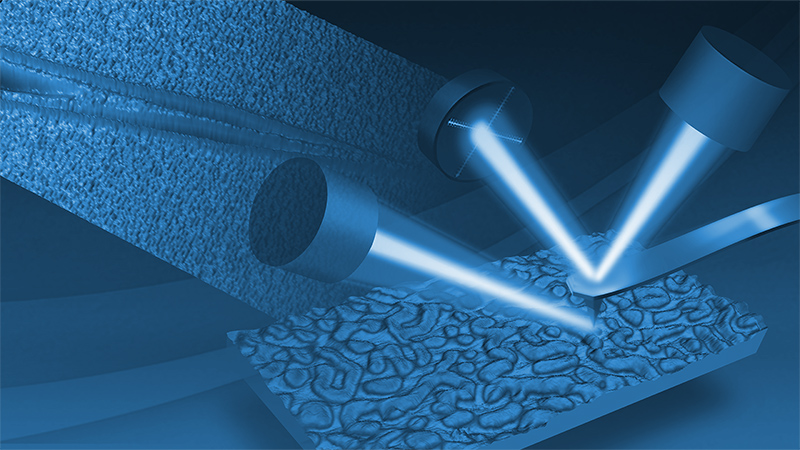nanoIR Customer Testimonials
(1) "The capability of the nanoIR3-s Broadband exceeded our expectations. The signal-noise-ratio is superb. As such, we could obtain spectra as clear as spectra of a conventional FTIR at nanoscale resolutions. Excitingly, we could see new vibrational features that are generated by the boundaries that have not been reported previously."
(2) "The wavenumber range of the nanoIR3-s Broadband is from 670 cm-1 to 4,000 cm-1 which is beyond any other system in the market, allowing us to observe spectra that have not been seen by other researchers. The system’s stability, combined with the exceptionally high-power broadband laser, leads to new horizons in nanoscale spectroscopy."
– (1) Professor Kourosh Kalantar-Zadeh
– (2) Dr. Jiong Yang
University of New South Wales (UNSW) Centre for Advanced Solid and Liquid based Electronics and Optics (CASLEO)
"The National Graphene Metrology Centre at NPL will be using the new nano-IR2s system from Anasys Instruments for both nearfield infrared spectroscopy and imaging. Anasys Instruments have been very responsive to our needs and provided exactly the solution we desired. The instrument itself performed out of the box. This level of quality in the technology we use helps NPL provide the most informative and reliable measurement data to our customers."
– Prof. Alexander Tzalenchuk, National Physical Laboratory, Teddington, UK
"As a group focusing on the functionalisation of surfaces and their electrochemical interactions, we are always looking for non-traditional techniques combining high lateral resolution with molecular information. Therefore, we selected the nanoIR2-s system because of its capability to combine above mentioned conditions.
We are looking forward using the nanoIR2-s to support research into analysis of hybrid systems, electrolyte uptake, inhomogeneity of semi-conductor surfaces, and we believe that the system will support the characterisation by techniques such as XPS or ToF-SIMS.”
– Prof. Dr. Ir. Tom Hauffman, Research Group Electrochemical and Surface Engineering, Vrije Universiteit Brussel, Brussels, Belgium
"AFM-IR has had a tremendous impact for the nanoscale characterization of heterogeneous biological protein samples.
NanoIR spectroscopy, simultaneously exploiting AFM and infrared spectroscopy, is applied to investigate at the nanoscale the misfolding process and the structure of the amyloid species present during the aggregation process. This information is fundamental for the comprehension of the molecular basis of neurodegenerative disorders.”
Dr. Francesco Simone Ruggeri, Research Fellow, Knowles Lab, University Cambridge, Cambridge, UK
"The University of Delaware purchased the nanoIR2 in a multiuser facility which I manage. Once the instrument was available to my users, it became a go-to tool for unique IR analysis. The nanoIR2 has proved to be a very robust platform with great stand-alone AFM capabilities. The user interface is clear and very intuitive, and the software never crashes. Many problems in manufacturing and failure analysis have been solved or identified to the delight of my industrial users. I look forward to many more years of satisfying use of the Anasys nanoIR2."
– Gerald Poirier, Manager, Advanced Materials Characterization Laboratory, University of Delaware
“The nanoIR appears to work like magic! It’s AFM-IR technique provides unrivalled access to nanoscale chemical information of relevance to the surface modification of materials. For the first time we have been able to test decades-old hypotheses in surface engineering, corrosion and coatings science with speed, precision and at unprecedented spatial resolution.”
– Prof. Stuart Lyon, AkzoNobel Professor of Corrosion Control, The University of Manchester
"After evaluating the competing technologies for nanoscale chemical composition of polymers, we chose to bring the powerful nanoscale IR spectroscopy (AFM-IR) technology into ExxonMobil. The AFM-IR instrument is easy to use – we were able to get it up and running quickly and to obtain key insights into our samples within a couple of weeks, despite having no prior AFM experience. We liked that nanoIR spectra correlate well to FTIR spectral libraries without peak shifts or distortions that are intrinsic to techniques that measure scattered light."
– Dr. Mauritz Kelchtermans, Project Leader Global Advanced Characterization, ExxonMobil Chemical (Retired)
“nanoIR combines the powerful functions of nanoscale IR spectra and chemical imaging based on two complementary techniques—photothemal AFM-IR and scattering SNOM. This provides us great flexibility on various kinds of materials in our lab (especially biological materials). Its user-friendly interface and easy operation accelerates my projects. The reliable local customer technical support ensures its great performance all the time.”
– Prof. Hu Tiger Tao, Department of Mechanical Engineering, University of Texas at Austin
“Using the nanoIR2 from Anasys Instruments over the last 18 months, my colleagues and I at the University of Delaware have been able to revisit many exciting research problems in phase separated polymer thin films and identify the chemical composition and morphology of the domains that result. I personally feel that the support that Anasys has given my research group in overcoming sample preparation challenges and by making their instrumental expertise available to us almost 24/7 has provided the opportunity and capability for us to examine many of the fundamental chemical and structural properties of polymers at the nanoscale.
At no time in the last 20 years has the future for correlating sample heterogeneity and chemical structure looked brighter and more promising.“
– Prof. John Rabolt, Karl W. and Renate Boer Professor and Founding Chair, Materials Science and Engineering, University of Delaware
"Our studies demonstrate the enormous potential of nanoIR in the area of protein misfolding and aggregation.
The nanoIR technique was used in our studies to provide a deeper understanding of protein misfolding and aggregation, and was able to confirm previous theories about protein structure that could not be tested due to the limitations of available techniques. There are significant medical and scientific implications of this finding that could change pharmacological and technological approaches to protein aggregation.”
– Prof. Giovanni Dietler, Director, Laboratory of the Physics of Living Matter, EPFL, Lausanne, Switzerland
"The nanoIR is a powerful tool for studying polymeric materials. It provided the spatial resolution vital to the success of this project."
– Prof. Su Zhaohui, State Key Laboratory of Polymer Physics and Chemistry, Changchun Institute of Applied Chemistry
“The AFM-IR solves a longstanding need in polymeric materials development for chemical analysis at the nanoscale. By doing it with an AFM, it simultaneously addresses one of the most important missing capabilities of the scanning probe microscopy platform – lack of chemical specificity, thus enabling the further growth of the AFM technique in new applications and markets. We are now able to ‘see’ the chemistry in the morphology.”
– Dr. Greg Meyers, R&D Fellow, Dow Chemical
“The nanoIR2 is a workhorse tool for us. It has multiple high-value applications tied to nanoscale chemical composition ranging from Polymer blends and films to nano-contaminants. Anasys has packaged this powerful capability within an easy-to-use platform. They also provide us with outstanding support. The wide demand among our customers for this nanoscale IR capability led to us acquiring our second nanoIR platform whose capacity utilization has also outstripped our demand forecast.”
– Dr. Jiping Ye, Nissan Analytical Research, Kanagawa, Japan
“The nanoIR is the most significant advance in AFM based measurements of the last decade. By enabling the AFM to get chemical composition information via nanoscale IR spectroscopy, for the first time, it has solved the 35 year old problem that the AFM is chemically blind. Unlike other approaches like TERS, nanoIR is easy to use and reliable, repeatable and does not rely on a proprietary probe.
In our Life Sciences focused research group, we used the nanoIR to get protein secondary structure on single protein fibrils which is a major advance for fields like Alzheimer’s, Parkinson’s, Huntington’s and Ataxia’s research. I expect it to similarly impact profoundly many other fields such as antibiotic-resistant bacterial strains, or chromosome studies.”
– Dr. Andrezej J Kulik , Laboratory of the Physics of Living Matter, EPFL (Retired)
"We are very happy with our nanoIR. Its breakthrough and unprecedented nanoscale chemical composition information has opened up tremendous insights for us into our nanotoxicity research.
It is a very easy to use tool that a new user can be trained up in a day or two. Besides the nanoscale chemistry information, it also provides nanoscale mechanics via Lorentz Contact Resonance and the nanoTA-2 for nanoscale thermal analysis, both of which are very useful for our research. Additionally, the nanoIR has a very easy to use AFM which I find my students tend to prefer over AFMs from other major AFM manufacturers, even for AFM performance.
Hence I have no doubt that the nanoIR from Anasys will enjoy widespread adoption in the Field of Pharmaceutical Science and other Academic/Industrial research areas since they have packaged a breakthrough scientific advance into an easy to use platform while adding in other powerful and complementary techniques. Importantly, technical support offered by Anasys is impeccable!"
– Prof. Wojtek Chrzanowsk, Faculty of Pharmacy, University of Sydney


